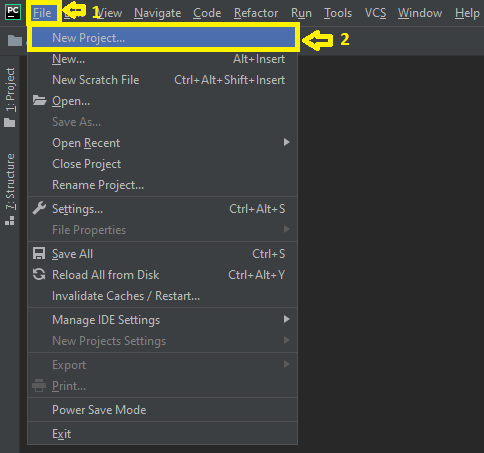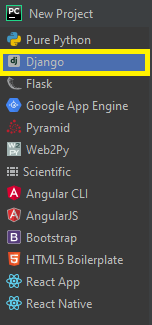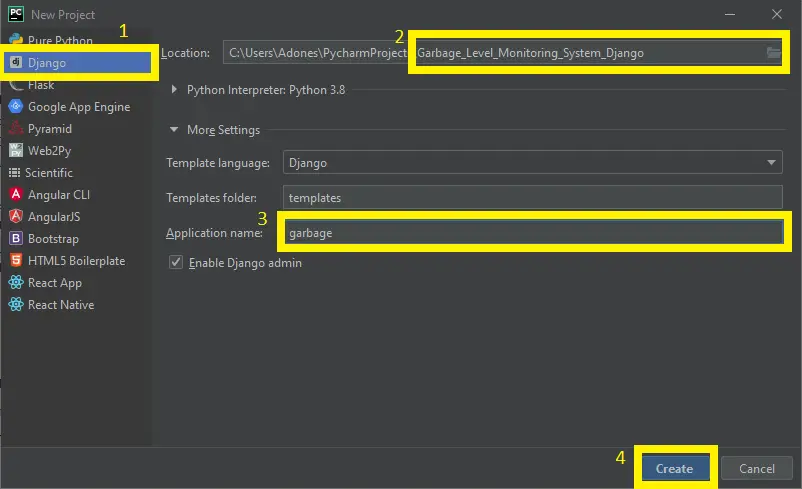This Garbage Level Monitoring System Project in Django created based on python, Django, and SQLITE3 Database.
When the garbage reaches its maximum capacity, a notification will be sent to the corporation’s office, and staff will be able to take action to empty the bin.
This system will aid in the improved cleaning of the city.
A Garbage Level Monitoring System in Django is an easy project for beginners to learn how to build a web-based python Django project.
We will provide you with the complete source code and database for the python project so that you can easily install it on your machine and learn how to program in Python Django.
To start creating a Garbage Level Monitoring System Project in Python Django, makes sure that you have PyCharm Professional IDE Installed in your computer.
This Garbage Level Monitoring System in Django Framework, Also includes a Download Source Code for free, just find the downloadable source code below and click download now.
| About Project | Project Details |
|---|---|
| Project Name | Garbage Level Monitoring System Project in Django |
| Python version (Recommended) | 3.8 Version |
| Programming Language Used | Python Django Language |
| Developer Name | itsourcecode.com |
| IDE Tool (Recommended) | Sublime, Visual Studio, PyCharm |
| Project Type | Web Application |
| Database | SQLite |
Admin Features of Garbage Level Monitoring System Project in Django
- Login Page – The page where the system administrator enters their system credentials in order to gain access to the system’s administrative side.
- New Dustbin Page –This is the page where an administrator can add a new dustbin.
- Dustbin List – The page with a list of dustbin that can be navigated to change or delete a dustbin.
- New Readings Page – The page on which an administrator can add new readings.
- Readings List – The page on which the list of readings can be viewed, modified, or readings.
- New User Page – The page where a new admin credentials are created by an admin.
- Users list – This is the page that lists and manages the added users.
Garbage Level Monitoring System in Django Steps on How to Create a Project
Time needed: 5 minutes
Here are the steps on how to create a Django Garbage Level Monitoring System with Source Code.
- Step 1: Open file.
First , open “pycharm professional” after that click “file” and click “new project“.

- Step 2: Choose Django.
Next, after click “new project“, choose “Django” and click.

- Step 3: Select file location.
Then, select a file location wherever you want.

- Step 4: Create application name.
After that, name your application.

- Step 5: Click create.
Lastly, finish creating project by clicking “create” button.

- Step 6: Start Coding.
Finally, we will now start adding functionality to our Django Framework by adding some functional codes.
Functionality and Codes
- Create template for the homepage
In this section, we will learn on how create a templates for the homepage. To start with, add the following code in your base.html under the folder of /templates/.
{% load static %}
<html>
<head>
<meta charset="utf-8">
<meta http-equiv="X-UA-Compatible" content="IE=edge">
<meta name="viewport" content="width=device-width, initial-scale=1">
<title>
Garbage Level Monitoring System
</title>
<link rel='stylesheet' href='{% static "css/bootstrap.min.css" %}'>
<link rel='stylesheet' href='{% static "css/base.css" %}'>
</head>
<body>
<!-- data-spy="scroll" data-target=".navbar" data-offset="10" -->
<nav class="navbar navbar-default navbar-fixed-top" style="background-color: skyblue;">
<div class="container">
<div class="navbar-header">
<button type="button" class="navbar-toggle collapsed" data-toggle="collapse" data-target="#navbar" aria-expanded="false" aria-controls="navbar">
<span class="sr-only">Toggle navigation</span>
<span class="icon-bar"></span>
<span class="icon-bar"></span>
<span class="icon-bar"></span>
</button>
<a class="navbar-brand" href="/">
GLMS
</a>
</div><!-- ./navbar-header -->
<div id="navbar" class="navbar-collapse collapse">
<ul class="nav navbar-nav" id="navbar-links">
<li>
<a href="/dashboard"><span class="glyphicon glyphicon-dashboard"></span> DASHBOARD </a>
</li>
</ul>
<ul class="nav navbar-nav navbar-right">
<!-- <li><a href="/accounts/register"><span class="glyphicon glyphicon-user"></span> Sign Up</a></li> -->
{% comment %} If user is logged in, show his/her username {% endcomment %}
{% if request.user.username %}
<li><a href="#">Hello, {{ request.user.username }}</a></li>
<li>
<a href="/logout">
<span class="glyphicon glyphicon-log-out"></span> Logout
</a>
</li>
{% else %}
<li><a href="/login"><span class="glyphicon glyphicon-log-in"></span> Login</a></li>
{% endif %}
</ul>
</div><!--/.nav-collapse -->
</div><!-- ./container-->
</nav>
<div class="add-margin-top"></div>
{% block content %}
{% endblock %}
</body>
<script src="{% static 'js/jquery.min.js' %}"></script>
<script src="{% static 'js/bootstrap.min.js' %}"></script>
<script src="{% static 'js/base.js' %}"></script>
<script src="{% static 'js/chart.min.js' %}"></script>
<script src="{% static 'js/utils.js' %}"></script>
</html>
Downloadable Source Code Below.
Anyway, if you want to level up your programming knowledge, especially python, try this new article I’ve made for you Best Python Projects with source code for Beginners.
But If you’re going to focus on web development using Django, you can download here from our list of Best Django Projects with source code based on real-world projects.
How To Run The Garbage Level Monitoring System Project in Django?
- Step 1: Extract/unzip the file
- Step 2: Go inside the project folder, open cmd and type the following commands to install Django Framework and run the webserver:
- pip install -r requirements.txt
- python manage.py migrate
- python manage.py runserver
- Step 3: Finally, open the browser and go to http://127.0.0.1:8000/
Summary
In summary, this Garbage Level Monitoring System Project in Django with Source Code can be useful to students or professional who wants to learn python programming language.
This project can also be modified to fit your personal requirements. Hope this project will help you to improve your skills. Happy Coding!
- How To Make A Point Of Sale System In Python
- Best Python Projects for Beginners
- Python MySQL Connection: Simple Python Step by Step Guide
- Python PIP Command Set-up / Fix: Step by Step Guide
- Random Password Generator in Python Projects With Source Code
- Python Range Function|Range in Python Explained with Examples
- School Management System Project In Django With Source Code
- Django Login And Registration With Source Code
- CRUD App In Django With Source Code
- Drag And Drop JavaScript With Source Code
- Todo List App Django With Source Code
Inquiries
If you have any questions or suggestions about Garbage Level Monitoring System Project in Django with Source Code, please feel free to leave a comment below.






what is the login id and password?
To login you need to create a superuser account. Just type this command: python manage.py createsuperuser
Thank you!!
What is frontend and backend here?
If you will run the project you will be able to see the frontend and back end